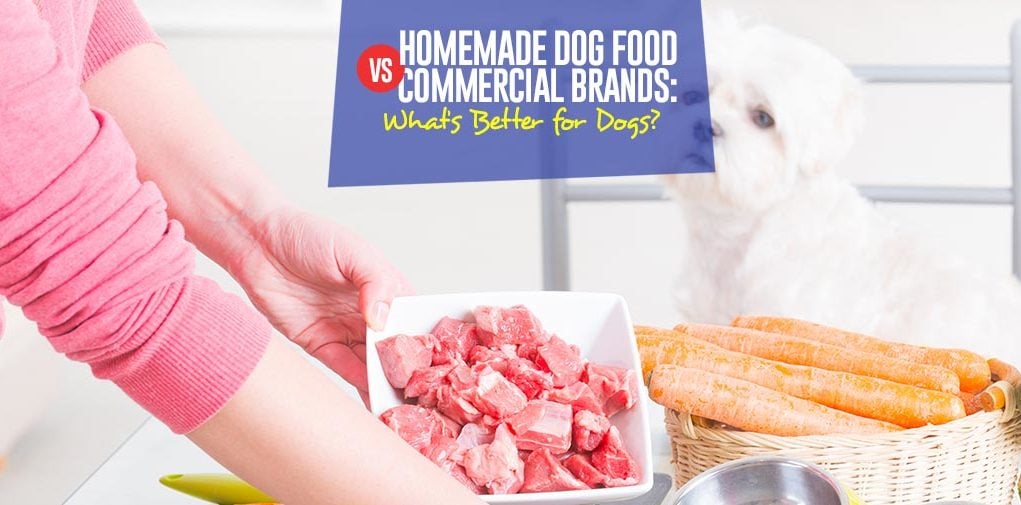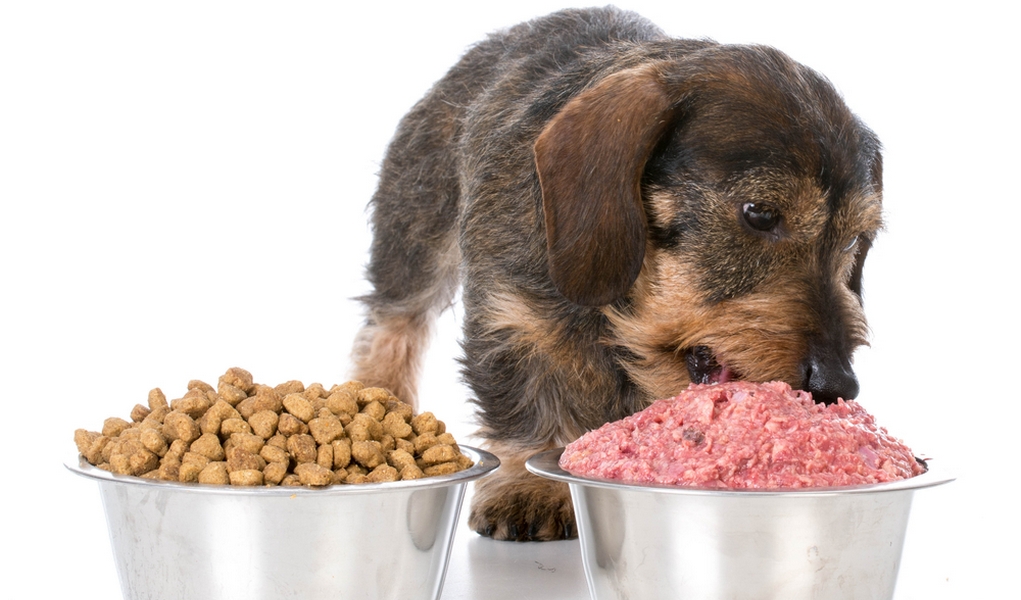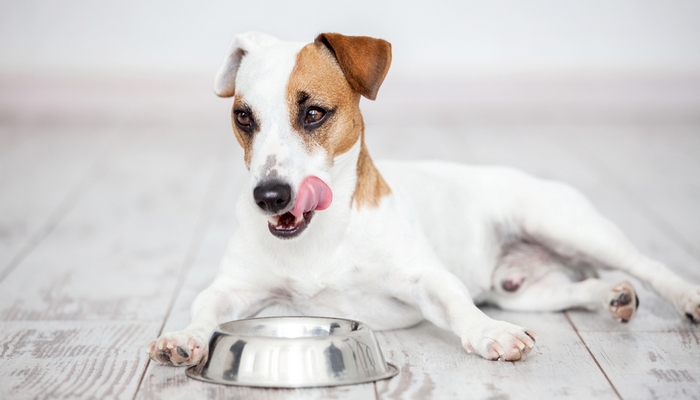Table of Contents
Eating well can allow us to live better and feel better. “You are what you eat” – as the saying goes. The same applies to dogs. In fact, proper diet was proven to extend dog's lifespan, thus every pet owners has wondered what the best diet is for their canine companion. Unfortunately, we can't always afford the commercial dog foods that claim to be the best.
According to most recent data, the pet food industry is a multi-billion dollar market, and the DVM360 Magazine predicts that it will grow to a $33 billion industry by 2018. The growth is fueled primarily with the sale of ‘premium’ dog foods. It's a huge business.
Pet food trends often parallel trends in the human food market, and “healthier” choices continue to flood the stores. Experts say we should expect more products for our pets that have no hormones, grains or gluten in the next few years. But is expensive dog food better than regular brands, and is commercial dog food better than homemade foods?
It's natural to want to feed our dogs the healthiest diet. Just like you, I always strive to improve the quality of life of my dogs. With a complete and balanced diet, your pet can lead a long, healthy, and active life. Today, many owners are looking for foods that:
- are made with natural ingredients,
- contain no byproducts,
- and have real meat as the first ingredient.
But during the past decade, there have been some well-publicized pet food recalls causing some owners and even some veterinarians to support feeding dogs homemade meals – raw, cooked, or a combination of both. One factor to keep in mind are the risks that homemade meals may present, but we'll get into that in just a moment.
So, which is better – commercial dog food or homemade dog food? Let’s take a look.
READ: 16 Things You Didn’t Know About Prescription Dog Food
Homemade Dog Food vs Commercial Brands
What are the pros and cons, and which is better?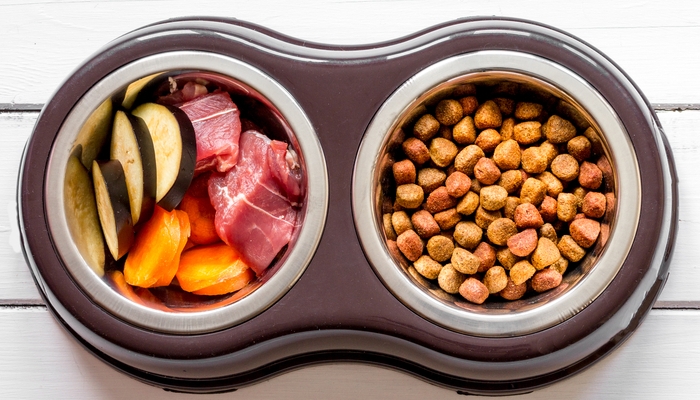
Commercial Dog Food Brands
Commercial dog food brands (and their ingredients) are regulated by the Food and Drug Administration (FDA). The ingredients are chosen (1) based on:
- cost
- taste
- how easy it is to digest
- nutritional content
To be considered ‘complete’ commercial foods must meet the minimal requirements of the Association of American Feed Control Officials (AAFCO). The AAFCO has a set of nutritional guidelines for dogs and manufacturers must verify their product meets these guidelines. If the food does not meet the guidelines, the product package must state that it should only be used a supplement.
You often see the term “natural” on packaged dog food. As defined by the AAFCO, “natural” means the preservatives in the food are natural. Many owners believe that having the word “natural” on the package means that less processed grains or whole ingredients were used in making the food – which is not the case.
With a homemade diet, it's hard to know if your dog is getting the proper nutrition.
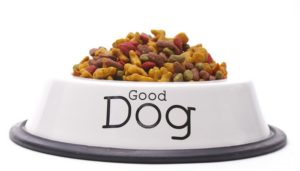 Over-the-counter commercial (non-raw) dog food brands are complete and balanced. They meet the AAFCO requirements. Many pet owners use these dog foods because they are simple, relativity inexpensive and provide proper nutrition, and vets often recommend some good quality brands.
Over-the-counter commercial (non-raw) dog food brands are complete and balanced. They meet the AAFCO requirements. Many pet owners use these dog foods because they are simple, relativity inexpensive and provide proper nutrition, and vets often recommend some good quality brands.
But here are some common misconceptions about commercial dog food brands and the facts that you need to know before you feed your dog:
1. Commercial pet foods have unnecessary additives and preservatives.
Facts: The FDA tests and approves all additives in pet food. The antioxidants used to keep pet food from becoming rancid are the same antioxidants used in the foods we eat. Some additives do not have nutritional value, but they make the product more visually appealing to the consumer.
2. Poultry by-product, meat, and bone meal are indigestible – or are made of feathers, hooves, and fecal matter.
Facts: Pet food is regulated and cannot contain feathers, hooves, or fecal matter to be in compliance with the law. The organs used (heart, liver, lungs) are rendered (cooked) and dried into a protein-rich powder, or meal. This meal is an excellent source of proteins and amino acids.
3. Dogs don’t need carbohydrates; dog food should be low in grains and carbohydrates.
Facts: Non-reproducing dogs do not need a diet rich in carbohydrates, but they do need carbs on a cellular level in the form of glucose. Glucose is used by all cells as a form of energy, and can be made in the body. However, not consuming enough carbohydrates in the diet does reduce the body’s natural ability to make its own glucose.
RELATED: 20 Pros and Cons of Homemade Dog Food Recipes
Homemade Dog Food Diet
Many owners choose to give their dogs a homemade food diet for good reason – they want a happy, healthy pet. The two most important health issues to consider with this diet type are food safety and nutritional integrity. Several studies done on homemade foods for dogs have shown that they lack essential nutrients.
Feeding homemade food to your dog requires considerable time and planning. Additionally, you have to know what your dog’s nutritional needs are so the food you feed him is healthy and beneficial.
It is essential that dog owners get the help and advice of a pet nutritionist before putting their dog on a homemade diet. Once established, the diet plan and recipes need to be followed exactly.
One study done (2) to monitor the health of dogs on a homemade diet concluded that homemade foods can be a useful tool. The challenge was that the owners were not able to stick to the diet! The majority of people in the study changed (added, substituted, or omitted items) the recipes or didn’t measure the ingredients correctly.
A different group of researchers used a computer to help analyze recipes for dogs and cats with long-term kidney disease. The recipes were homemade diets that were advertised for use in dogs and cats suffering from kidney disease.
However, none of the recipes even met all the National Research Council’s (NRC) nutrient recommended allowances for adult animals. The diets studied (3) were concluded to be inadequate in providing proper nutrition.
Raw food diets are trending in the human food market, so there is considerable interest for dog and cats to be on a raw food diet too. One popular type of this diet is called BARF (Bones and Raw Food). As with other homemade foods raw foods can provide balanced nutrition, but they can also lead to nutrient deficiencies and even nutrient excesses.
Pet stores have commercially prepared raw meat diet food for dogs available. These products have been shown to contain bacteria like E. coli and Salmonella. Even more serious, the bacteria can spread to the pet’s environment and cause illness in humans.
When dogs eat the contaminated food, bacteria can be found in their stool. Anyone who comes into contact with the feces may also become infected with that bacteria.
MORE: 31 Dog Food and Feeding Myths You Need To Stop Believing Right Now
Dog's Daily Nutritional Requirements
You may find yourself leaning toward making your food for your dog at home. If so, you need to know what to put in the food to make the diet complete and balanced. Human and canines are not the same when it comes to how food is metabolized.
Dog muscle is made of primarily oxidative fibers (they have more myoglobin (4), a protein that stores oxygen and quickly deliver it to muscle cells). Their muscle is also more adapted to use fat than is human muscle. Moreover, your dog's dietary needs will also vary based on how his day to day looks (e.g. athletic dogs need a different diet).
Your dog's daily nutritional requirements include:
- Protein
- Fat (from oil or meat)
- Carbohydrates (grains or veggies)
- Calcium (bone meal or egg shells ground to powder)
- Essential fatty acids (oatmeal, egg yolks, some plant oils)
How much of the above nutrients your dog needs every day varies considerably.
RELATED: What Dog Food Is Good for Dogs and Why?
Protein and calcium requirements
Meat alone is not a sufficient diet for your dog. It is not balanced and lacks essential vitamins and minerals. Your dog will need additional calcium, without it, your dog could have poor bone mineralization, increased risk of fractures and secondary hyperparathyroidism (an imbalance in blood calcium levels).
Dogs' parathyroid glands regulate calcium and phosphorus levels in the blood. Without the proper amount of calcium in their diet, your dog's body will reabsorb bone because the parathyroid glands overproduce parathyroid hormone (PTH).
It is recommended that you add 1 gram of bone meal to every 50 grams of meat to avoid this complication. Care must be taken to prevent excess supplementation of calcium.
READ: Understanding Dog Food – Do You Know What’s in There?
Fiber requirements
 Fiber is NOT considered an essential nutrient for dogs, but it can help aid overall health. Traditionally beet pulp and microcrystalline cellulose have been added to commercial dog foods as a source of fiber.
Fiber is NOT considered an essential nutrient for dogs, but it can help aid overall health. Traditionally beet pulp and microcrystalline cellulose have been added to commercial dog foods as a source of fiber.
There is some evidence that corn fiber, rice bran, whole grains and fruit fiber can also serve as adequate sources of fiber for dogs. However, the scientists in the study (5) concluded more work needs to be done to determine how much of these fiber sources to give to pets.
It is well known that humans and animals eat to get the energy their bodies need to support daily activities. To ensure your dog has the right amount of food, it is important to know how much energy they expend.
How much energy Fido requires varies based on:
- weight
- age
- activity level
- sex
- neuter status
- breed
One group reviewed literature findings (6) of the energy requirements of adult dogs and found that it varies from 95 – 200 kcal/kg0.75 per day. This information was obtained from 29 different studies that covered a wide variety of dogs within the categories listed above.
They concluded that because obesity is a common problem for pet dogs, more work needs to be done to find out the exact needs of canine companions. Additionally, pet owners need to be educated so overfeeding it avoided.
In a Nutshell
The ‘perfect’ diet for your dog may not exist. The nutritional needs of your dog change throughout his life – just like yours. It is true that your dog's diet may help decrease the possibility of your dog getting sick.
If not managed and carefully controlled, your dog's diet can result in disease. With the help of a nutritionist or your veterinarian, you can make the right choices for your dog. The goal is simple: a balanced, complete diet for a long, healthy, and happy life.
READ NEXT: 30 Myths That Many Dog Owners Still Believe


